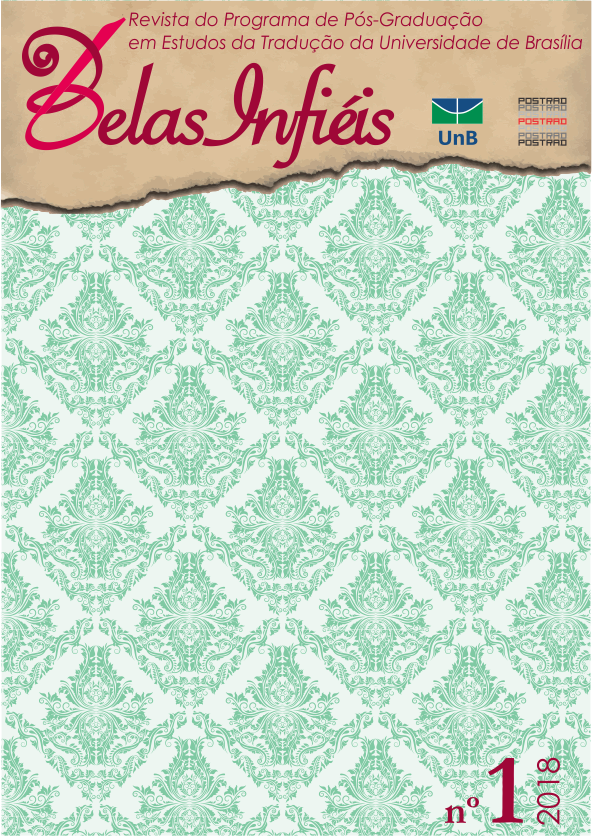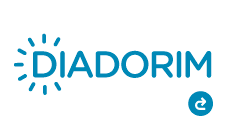Contrasting orality markers in translations of “highbrow literature” and “popular best-selling fiction”:
Ernest Hemingway and Agatha Christie
DOI:
https://doi.org/10.26512/belasinfieis.v7i1.12460Abstract
This article aims to offer a quantitative analysis of orality markers in fictional dialogues in two categories of literary works: those associated with highbrow literature and those considered to be bestselling popular fiction. By resorting to the AntConc software, this study investigated the occurrence of 45 types of orality markers regarding register or diaphasic linguistic variation in two different groups of literary works translated into Brazilian Portuguese: four translated books by Ernest Hemingway and four ones by Agatha Christie. The research was meant to observe: a) the variety of orality markers present in such translations; b) which orality markers were not employed, and c) if there was any orality marker usually not recommended by the traditional conservative grammar manuals. The results suggest possible regularities and significant differences between the two groups of translations under scrutiny, which allows for some preliminary explanatory hypotheses.
Downloads
References
BAGNO, M. Dicionário crítico de sociolinguística. São Paulo: Parábola, 2017.
______. Não é errado falar assim! Em defesa do português brasileiro. 2ª. ed. São Paulo: Parábola, 2010.
BOURDIEU, P. A economia das trocas simbólicas. Tradução de Sergio Miceli et al. 7ª. edição. São Paulo: Perspectiva, 2011.
BRITTO, P. H. A tradução literária. Rio de Janeiro: Civilização Brasileira, 2012. p. 81-117.
BRITTO, P.H.; LANDSBERG, D. As traduções de Huckleberry Finn à luz das normas de Toury. Tradução em Revista, n.20, vol. 2, p.2-16, 2015.
CHRISTIE, A. Assassinato no expresso oriente. Tradução de Petrucia Finkler. Porto Alegre, L&PM, 2017.______. Cai o pano. Tradução de Bruno Alexander. Porto Alegre: L&PM, 2015.
______. Um punhado de centeio. Tradução de Alexandre Boide. Porto Alegre: L&PM, 2014.
______. Morte na Praia. Tradução de R. Breunig. Porto Alegre: L&PM, 2013.
DÓRIA, T. P. L; ALVES, V. R. O. Estudo da gramaticalização do termo/expressão tipo assim em “O diário de Tati”. Sociodialeto, n. 12, vol. 4, p.262-277, 2014. Disponível em: < http://www.sociodialeto.com.br/edicoes/17/31052014041317.pdf> Acesso em: 02 de março 2018.
EVEN-ZOHAR, I. Teoria dos polissistemas. Tradução de Luiz F. Marozo, Carlos Rizzon e Yanna Cunha. Translatio, n. 5, p.1-21, 2013. Disponível em: <http://www.seer.ufrgs.br/translatio/article/viewFile/42899/27134>. Acesso em: 05 de janeiro de 2018.
FARACO, C. A. Norma culta brasileira: desatando alguns nós. São Paulo: Parábola, 2008.
HEMINGWAY, E. Contos: volume 2. Tradução de José J. Veiga. 5ª ed. Rio de Janeiro: Bertrand Brasil, 2015a.
______. Do outro lado do rio, entre as árvores. Tradução de José Geraldo Vieira. Rio de Janeiro, 2015b.
______. O sol também se levanta. Tradução de Berenice Xavier. Rio de Janeiro: Bertrand Brasil, 2015c.
_______. Por quem dobram os sinos. Tradução de Luís Peazê. Rio de Janeiro: Bertrand Brasil, 2013.
MORAIS, G. A representação do modelo de herói clássico na personagem feminina Katniss Everdeen, de “Jogos vorazes”. 2018. 218f. Dissertação (Mestrado em Letras). Programa de Pós-Graduação em Letras ”“ Universidade Estadual Paulista “Júlio de Mesquita Filho”, Instituto de Biociências, Letras e Ciências Exatas, 2018.
NEIVA, A. M. S. Native Son in Brazilian Portuguese with a study on dialects and translation: a nonlogocentric approach. 1995. 822f. Tese (Doutorado em Inglês) ”“ Department of English - Northern Illinois University, Dekalb, Illinois, 1995.
ROTH, P. Indignation. Boston, New York: Houghton Mifflin Company, 2008.
______. Indignação. Tradução de Jório Dauster. São Paulo: Companhia das Letras, 2013.
PANCAKE, B. D. J. Contos cortantes. Tradução de José J. Veiga. Rio de Janeiro: Bertrand Brasil, 1994.
PRADO HENRIQUE, H. M. Best-seller: a história de um gênero. Rio de Janeiro: Usina de Letras, 2010.
PRETI, D. (Org.). O discurso oral culto. 2ª. edição. São Paulo: Humanitas, 1999.
SHAW, G. B. Pygmalion. Philadelphia: Pennsylvania State University, 2004.
______. Pigmaleão. Tradução de Millor Fernandes. Porto Alegre: L&PM, 2005.
SODRÉ, M. Best-seller: a literatura de mercado. São Paulo: Ática, 1988.
TOURY, G. Descriptive translation studies and beyond. Revised edition. Amsterdam/Philadelphia: John Benjamins Publishing Company, 2012.
TWAIN, M. The adventures of Huckleberry Finn. Feedbooks. E-book. Disponível em: <http://www.feedbooks.com/book/71/the-adventures-of-huckleberry-finn> Acesso em: 01 de março 2018.
______. As aventuras de Huckleberry Finn. Tradução de Rosaura Eichenberg. Porto Alegre: L&PM, 2011.
VEIGA, J. J. Os cavalinhos de Platiplanto. 18ª. ed. Rio de Janeiro: Bertrand, 1989.
______. A estranha máquina extraviada: contos. 4ª. ed. Rio de Janeiro: Civilização Brasileira, 1981.
______. Os pecados da tribo. 2ª. ed. Rio de Janeiro: Civilização Brasileira, 1978.
WRIGHT, R. Native son. New York: Harper & Rows, 1966.
Downloads
Published
How to Cite
Issue
Section
License
Given the public access to this journal, the texts are free to use but requires the recognition of the original authorship and initial publication in this journal to be properly stated.
 The journal allows the use of works published for non-commercial purposes, including the right to submit the work to publicly accessible databases. Published contributions are the sole and exclusive responsibility of the author(s).Â



















